Farmhouse Dining Table And Bench
Difficulty
Intermediate
| 
Free plans to build a Farmhouse Table. This table has been built tens of thousands of times and is loved the world over for it's basic material composition, simple clean lines, easy to build steps, and sturdy, functional size. Our step by step plans with diagrams make it easy.
This plan uses pocket holes and is the updated plan. We also have this plan available to build without pocket holes.
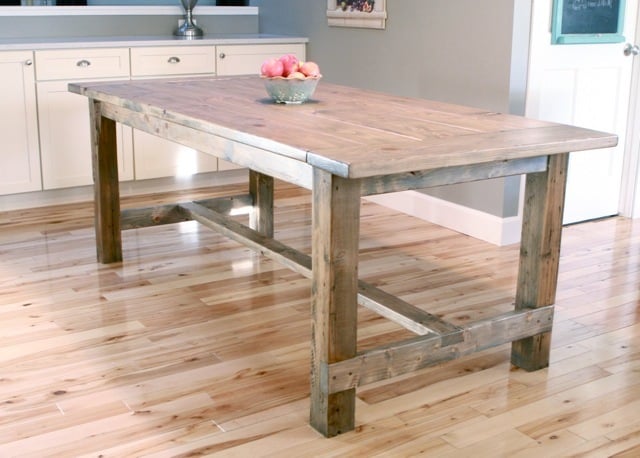
Built by Hillary at The Friendly Home, we upgraded the farmhouse table for pocket hole joinery (no visibile fasteners) and easier construction.

Hillary made this table with pocket holes instead of adding the 2x2 supports as done in the original plan, saving a ton of cuts and holes to be drilled, which saves time and money.
Also, by using pocket holes, we hide most all of the screw holes, so a beautiful stained finish like Hillary's is very easy to do.

The easy to do pocket hole plan follows if you want to build this table.
And as always, Hillary delivers a beautiful finish, and you can get all the details on how Hillary finished her table here. I love the stain color and will have to try it as well!
PS - Don't have a pocket hole jig? Here's the original Farmhouse Table Plans.
PSS - Have trouble finding 4x4s? Check out this beginner friendly 2 Tool/$50 Farmhouse Table plans
Pin For Later!
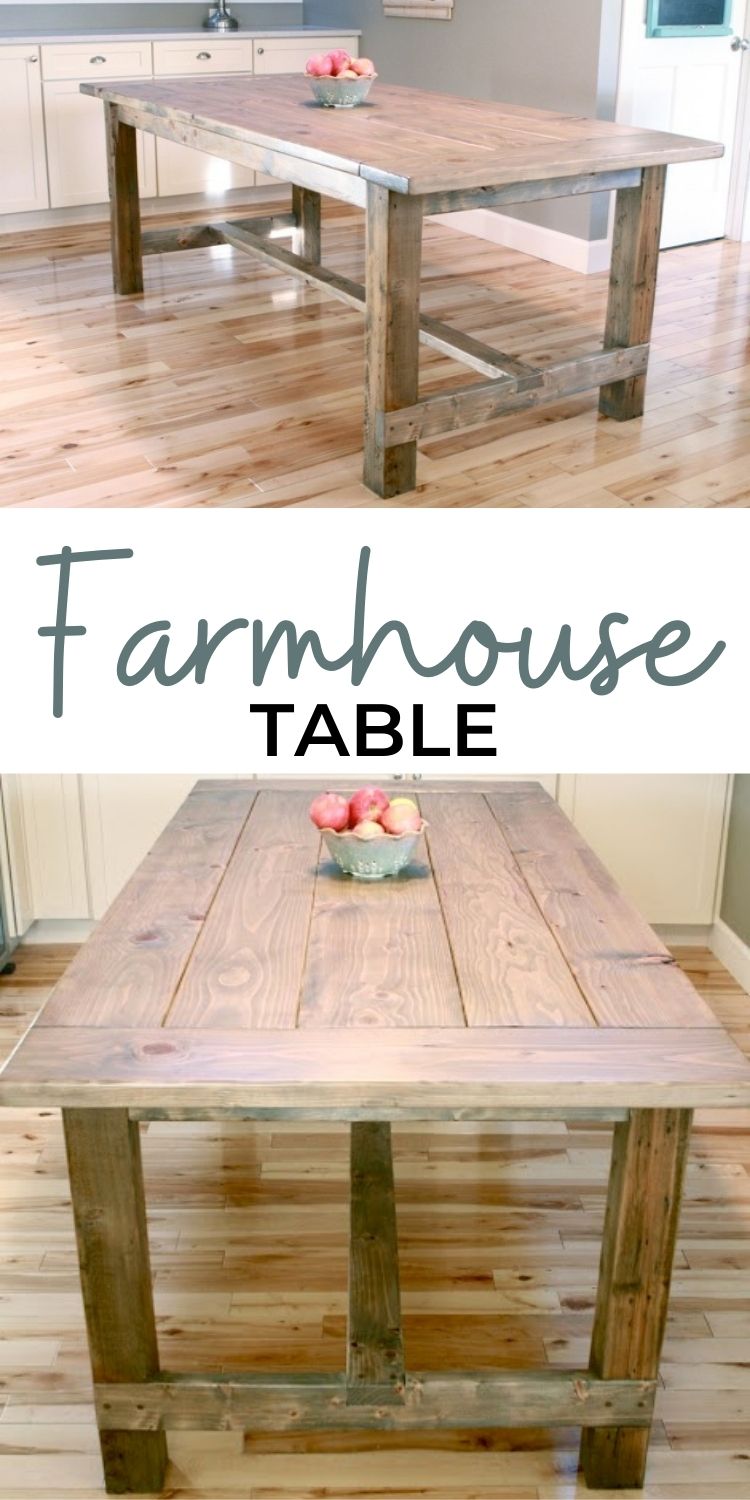
Dimensions
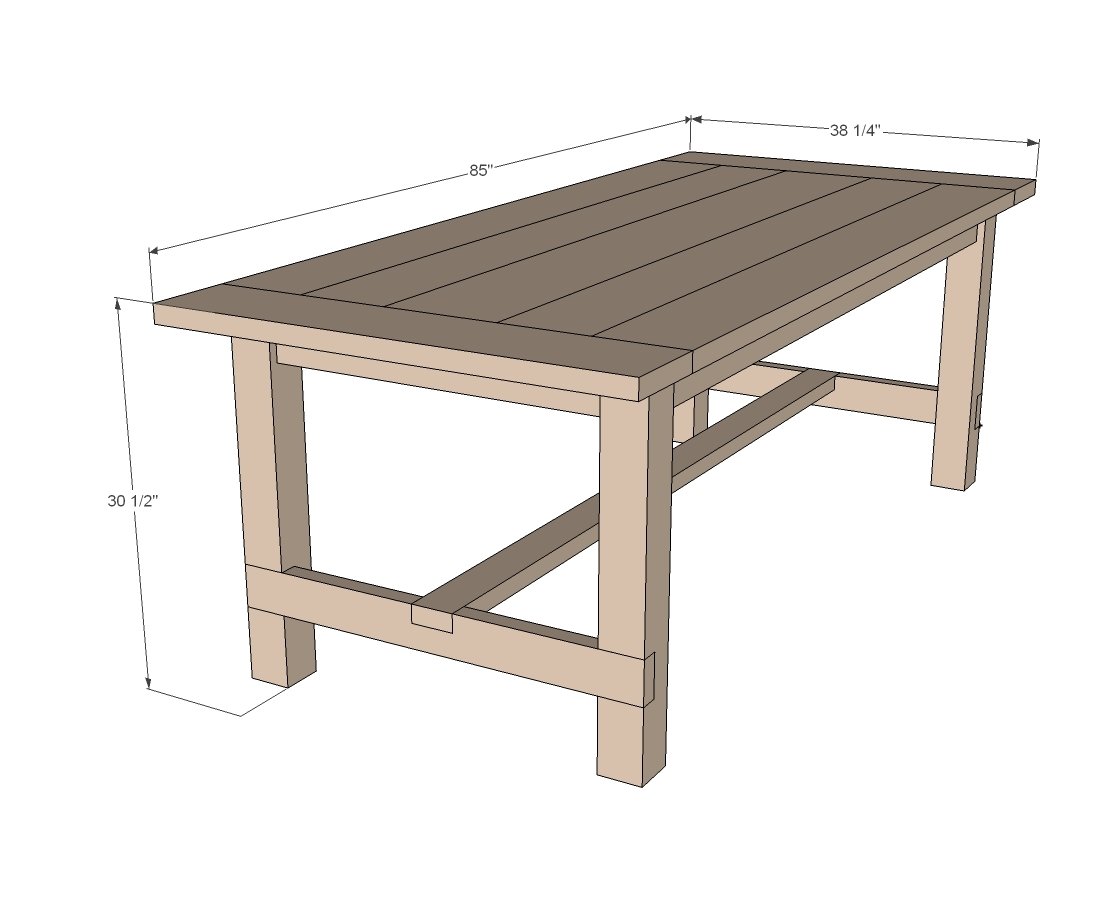
Dimensions shown above.
Preparation
Shopping List
- 4 - 2x4 @ 8 feet long
- 1 - 4x4 @ 10 feet long
- 4 - 2x8 @ 6 feet long
- 1 - 2x8 @ 8 feet long (breadboard ends)
- 1 - 2x10 @ 6 feet long
Cut List
- 4 - 4x4 posts @ 29" (legs)
- 2 - 2x4 @ 67" (long aprons)
- 2 - 2x4 @ 27" (short aprons)
- 1 - 2x4 @ 74" (stretcher)
- 2 - 2x4 @ 34" (stretcher supports)
- 4 - 2x8 @ 70.5" (table top planks)
- 1 - 2x10@ 70-1/2" (center table top plank -- I had to use one 2x10 to get the right overall width)
- 2 - 2x8 ~38" (breadboard ends -- measure your joined tabletop before cutting these)
General Instructions
Please read through the entire plan and all comments before beginning this project. It is also advisable to review the Getting Started Section. Take all necessary precautions to build safely and smartly. Work on a clean level surface, free of imperfections or debris. Always use straight boards. Check for square after each step. Always predrill holes before attaching with screws. Use glue with finish nails for a stronger hold. Wipe excess glue off bare wood for stained projects, as dried glue will not take stain. Be safe, have fun, and ask for help if you need it. Good luck!
Instructions
Step 1
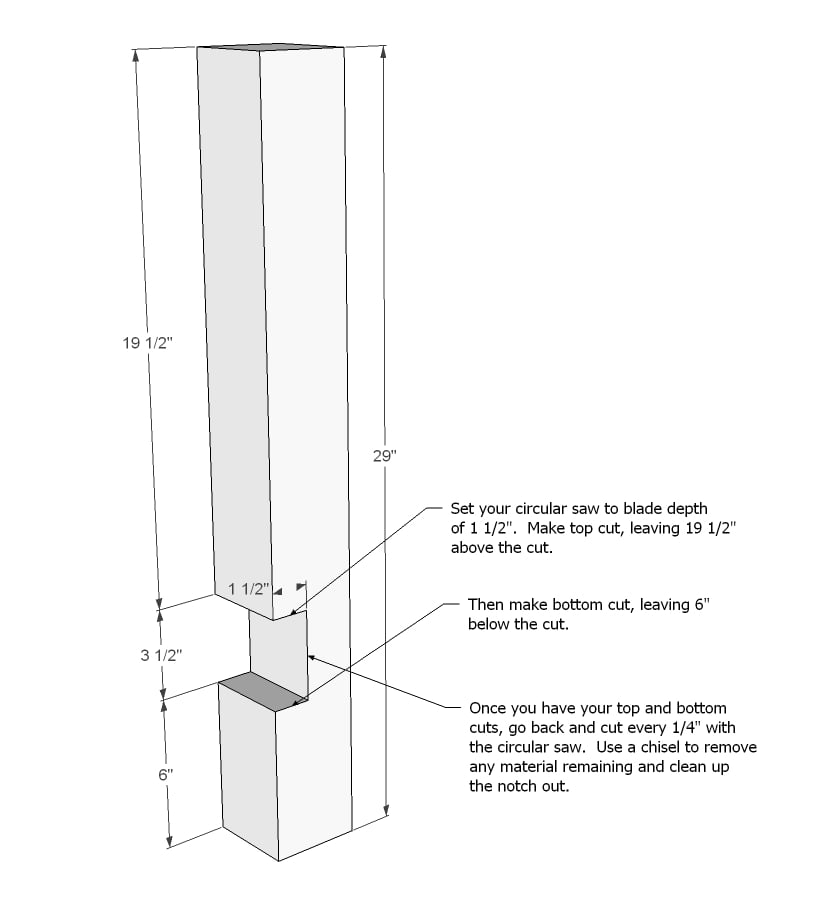
First, cut and notch out the 4x4s. If you can get your home improvement store to make square cuts, ask them to cut your 4x4s. Otherwise, you'll need a 12" (maybe a 10" will work too) miter saw or set your circular saw to the deepest possible cut. Cut one side, flip the 4x4 and finish the cut on the bottom side. Sand until cut is smooth. You'll probably add cork or felt pads under the legs later on to level table up and protect your floor.
Then notch out the stretcher joint as shown in diagram. Definitely practice first on a scrap if you can. This is easier to do than it looks - just be sure to get the top and bottom cut right, and it will all work out!
Step 2
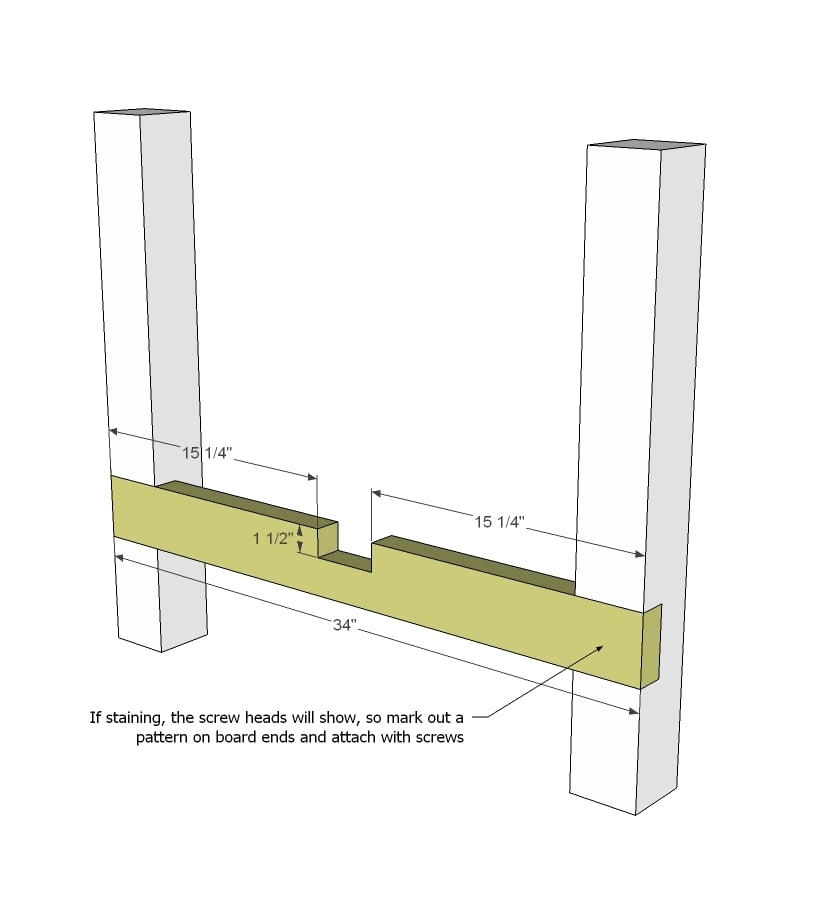
Notch out the stretcher support board first, then attach to the 4x4s. Remember the screws will show here, so drill in pattern. Use 3" screws to attach.
Do both ends.
Step 3
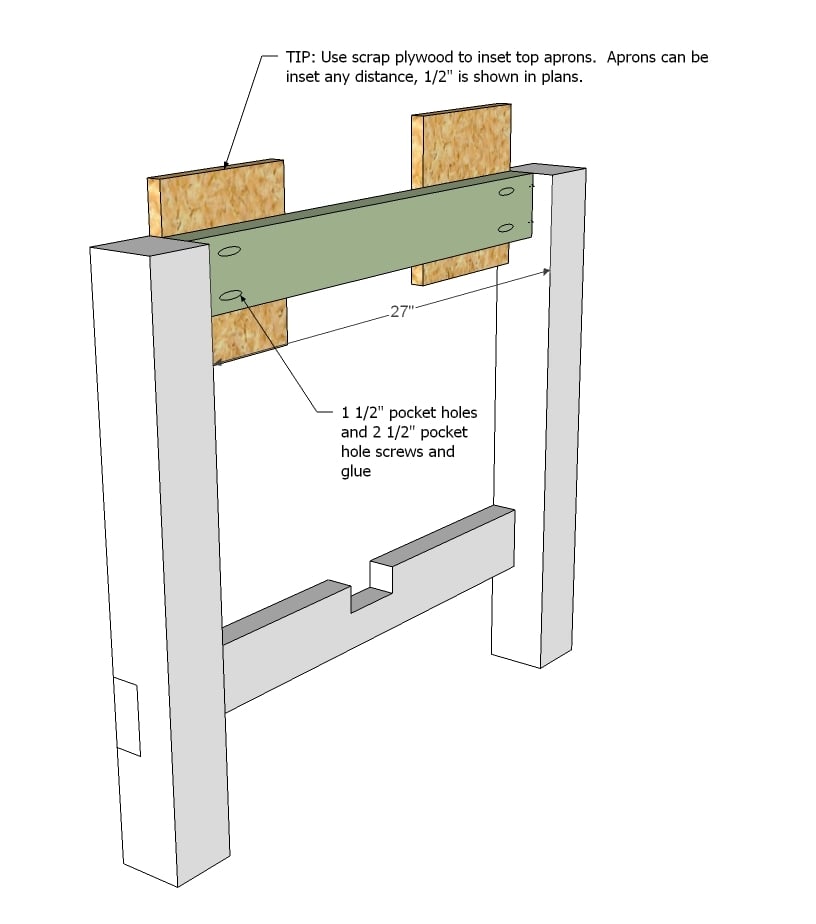
Then add your top aprons with 1 1/2" pocket holes and 2 1/2" pocket hole screws.
NOT SHOWN: Drill 1 1/2" pocket holes on the insides of your aprons facing upward for later attaching the the tabletop too. Drill three holes per end apron.
Step 4

Now attach the two ends together to create your table frame.
NOT SHOWN: Drill 1 1/2" pocket holes on the insides of your aprons facing upward for later attaching the the tabletop too. Drill five holes per side apron.
Step 5
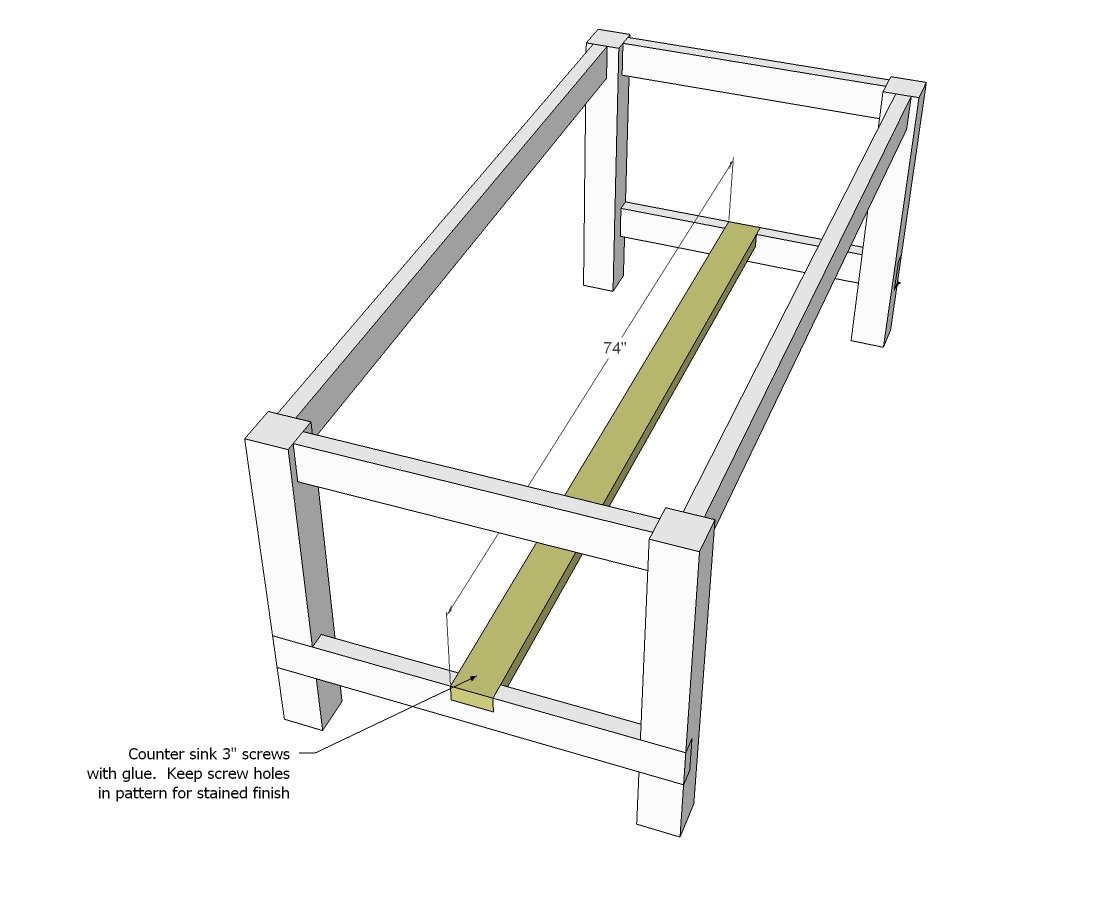
Attach base stretcher with pocket holes underneath.
Step 6
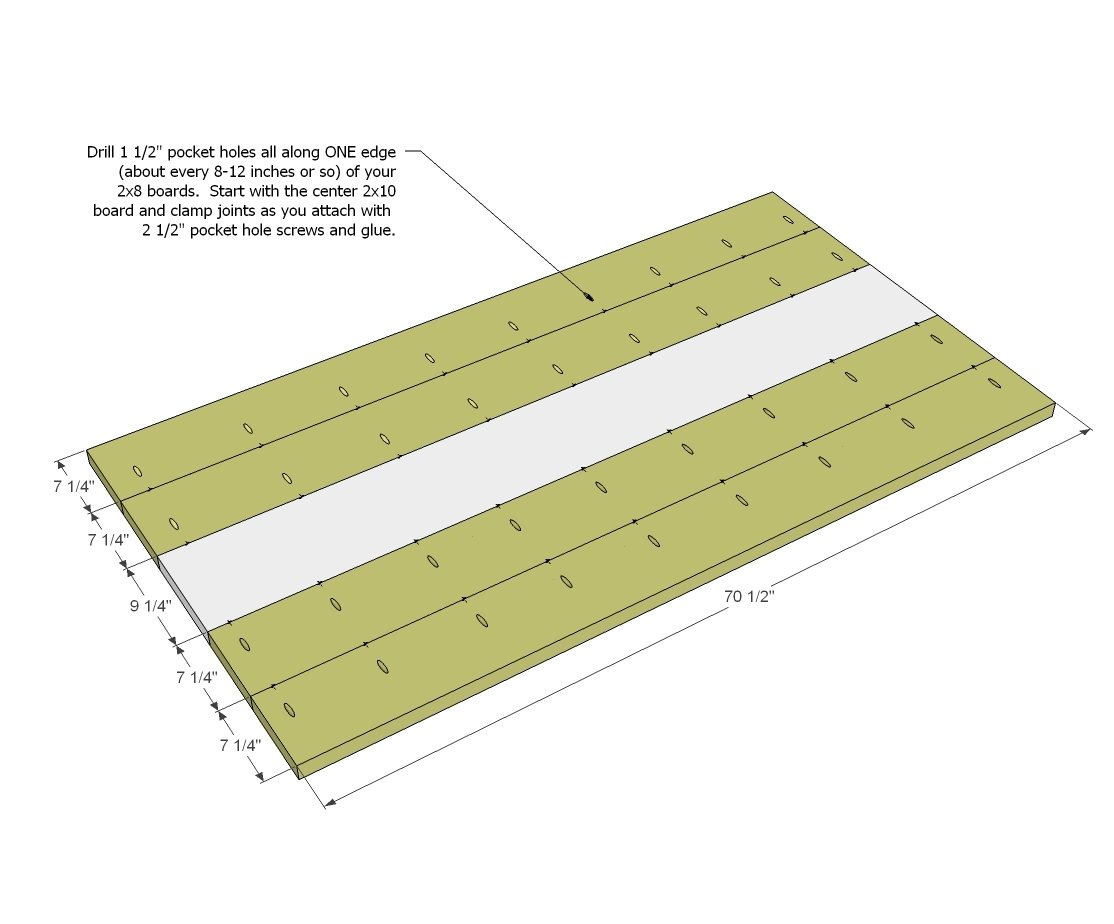
Now start building your tabletop.
Step 7
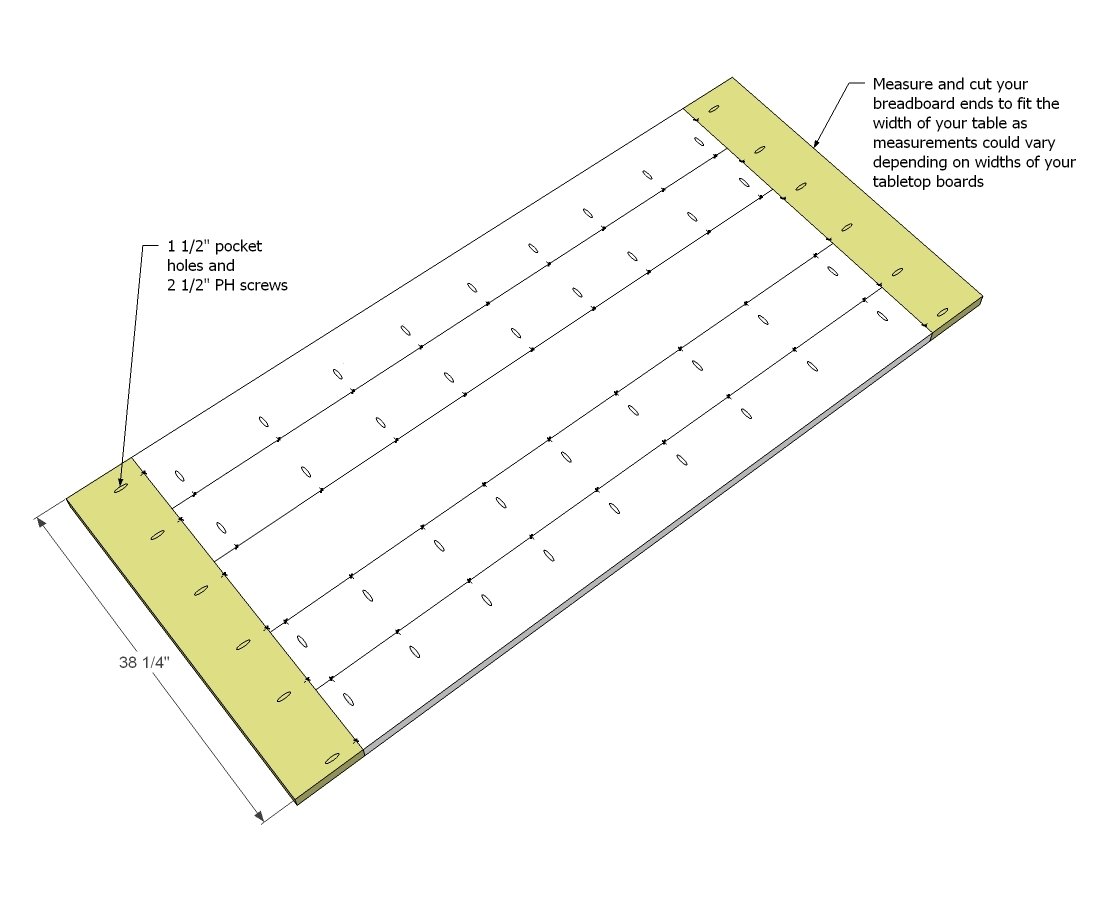
Measure and cut your breadboard ends to fit and attach to tabletop.
Step 8
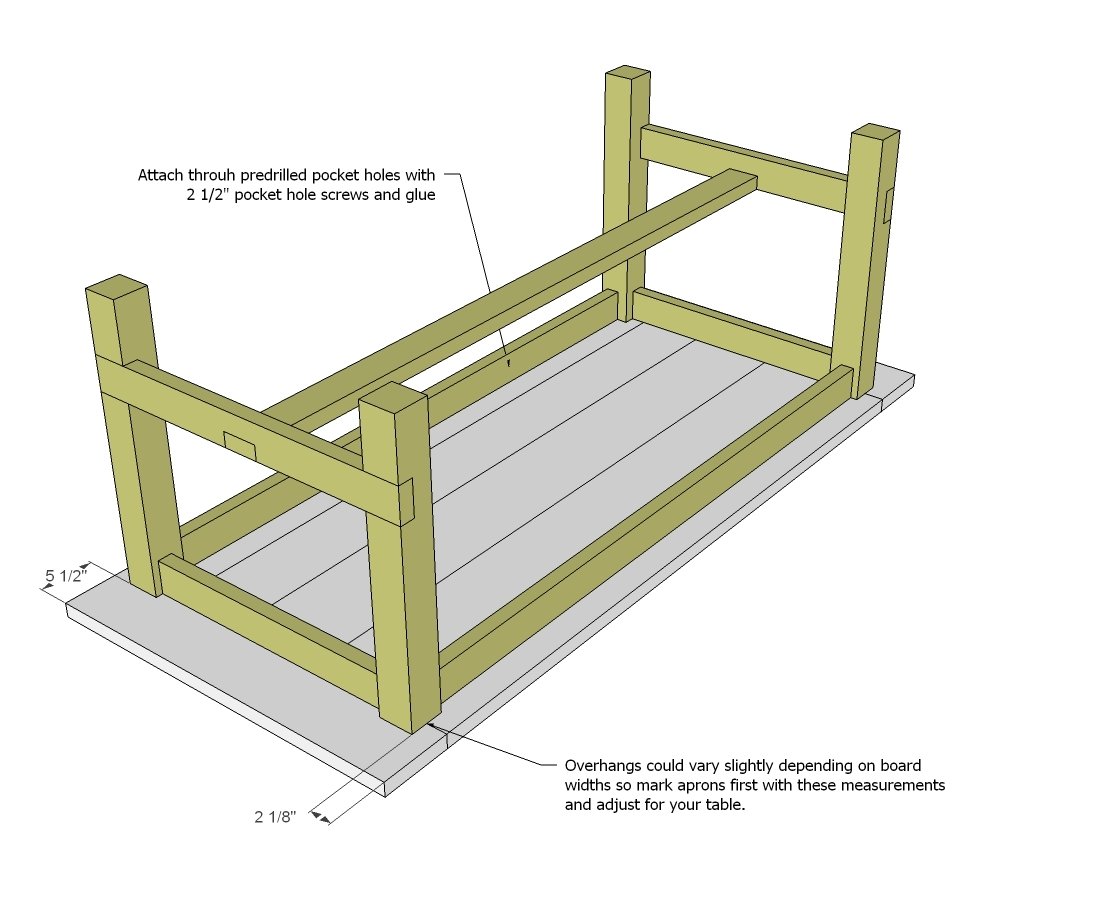
Then attach the base to the tabletop through predrilled 1 1/2" pocket holes with 2 1/2" pocket hole screws.
Preparation Instructions
Fill all holes with wood filler and let dry. Apply additional coats of wood filler as needed. When wood filler is completely dry, sand the project in the direction of the wood grain with 120 grit sandpaper. Vacuum sanded project to remove sanding residue. Remove all sanding residue on work surfaces as well. Wipe project clean with damp cloth.
It is always recommended to apply a test coat on a hidden area or scrap piece to ensure color evenness and adhesion. Use primer or wood conditioner as needed.
Farmhouse Dining Table And Bench
Source: https://www.ana-white.com/woodworking-projects/farmhouse-table-updated-pocket-hole-plans
